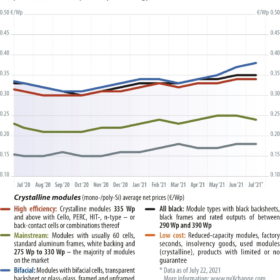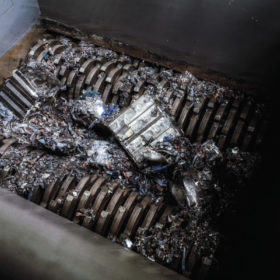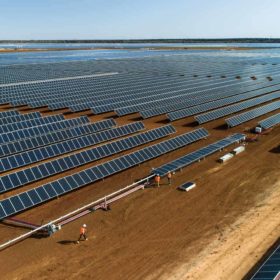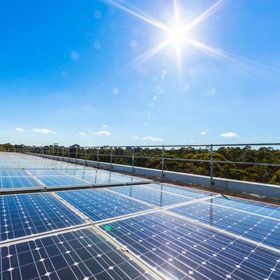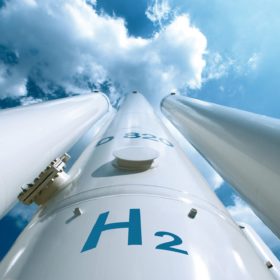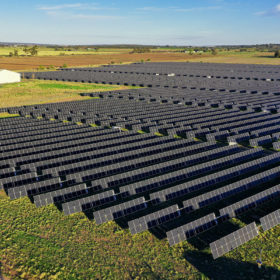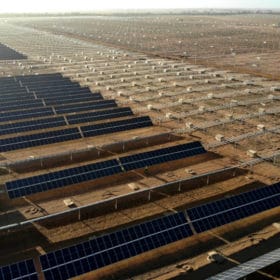ALPA seeks to harness the renewable gold rush for Australia’s regional communities
Debate on independent MP Dr Helen Haines’ Australian Local Power Agency Bill 2021, which seeks to anchor the benefits of renewables projects in their hosting regions, will be informed by Friday’s parliamentary committee hearing of submissions on the proposed legislation. A number of valid discussion points have been raised.
Mini organic solar module with 13.94% efficiency
The panel is based on 14.9%-efficient organic PV cells with a surface of 1.1 cm2 that the same research group unveiled in September 2020. The solar cells were interconnected using laser structuring.
Sunday read: A decisive movement in module prices
The sky is the limit. Fortunately, this expression does not apply to current prices for PV panels, which have recently declined, following a continuous rise since the beginning of the year. Whether this situation holds, or whether prices drop further in the coming months is hard to say at the moment, writes Martin Schachinger of pvXchange. Polysilicon prices and thus wafer and cell prices could be in for a slight decline. However, a decisive movement in module prices in general is unlikely before the fourth quarter.
Saturday read: Battery recycling and material uncertainty
Lithium-ion batteries remain the front-runner to power EVs, but without clearer recycling plans from the European Union and the United States, the balance isn’t yet tipped away from heavy mining of new materials to focus on supplying industry needs, writes Ian Morse.
New England REZ ‘swamped’ with 34 GW of clean energy projects
AUSTRALIA’S largest planned Renewable Energy Zone has been ‘swamped’ by investors with the New South Wales government revealing that more than 80 new solar, wind and energy storage projects, totalling a massive 34 GW, had been proposed for the New England region.
Monash launches ‘toolbox’ to aid rollout of microgrid technology
Researchers at Melbourne’s Monash University have used lessons learned during the development of a solar PV powered microgrid at its Clayton campus to produce an interactive ‘toolbox’ designed to support the uptake of the technology in commercial, industrial and community settings.
Origin teams with Japanese energy giant on green hydrogen project
Australia’s biggest energy retailer Origin Energy will team with Japan’s largest oil refiner Eneos to explore the potential of establishing a commercial-scale green hydrogen supply chain between Australia and Japan.
Gravity-based renewable energy storage tower for grid-scale operations
Energy Vault secured US$100 million (AU$137 million) in Series C funding for its EVx tower, which stores gravitational potential energy for grid dispatch.
Australia grid delays affect Dutch developer’s figures
Photon Energy reported raised revenue from sales of electricity in the second quarter of the year, compared with 12 months earlier, but said grid hold-ups at 14.6 MW of solar projects Down Under had affected performance.
CEC concerned ESB reforms will erode investor confidence
The Energy Security Board’s newly revealed market reforms have sparked widespread scrutiny with the Clean Energy Council declaring that among the recommendations are proposals that risk further undermining confidence in future investments in clean energy generation.


